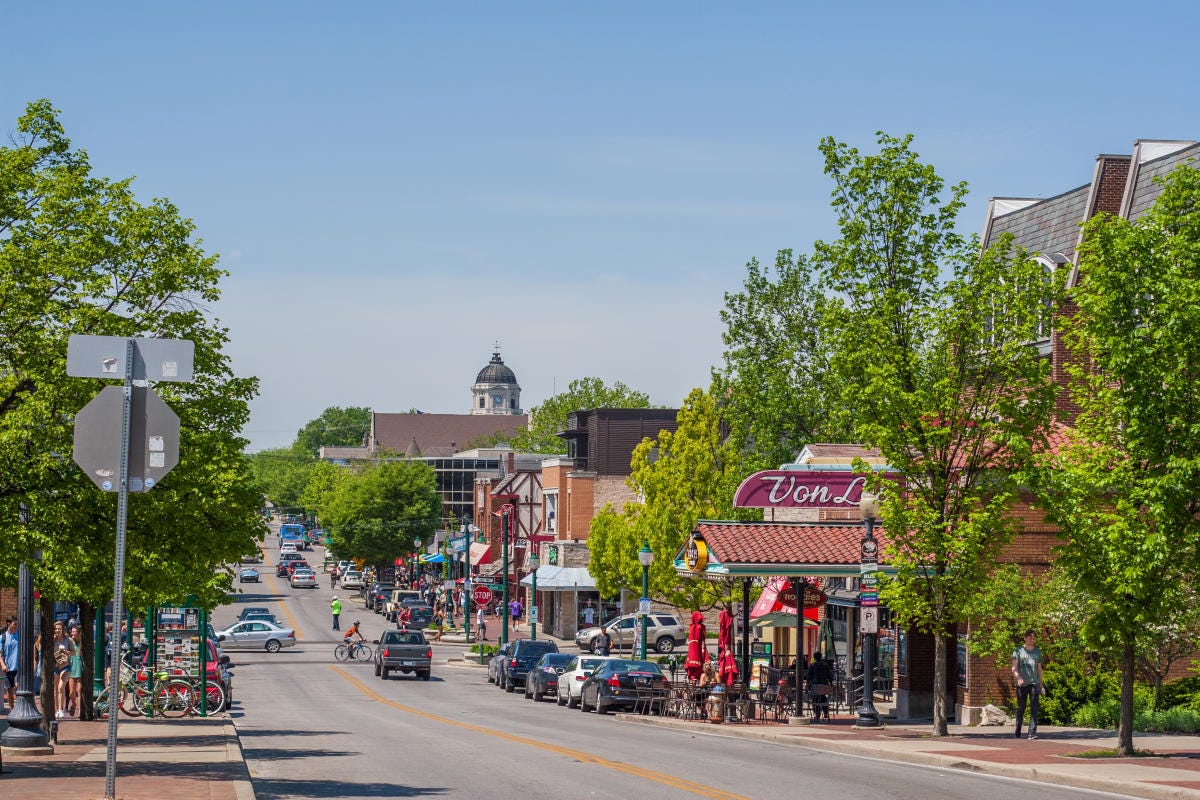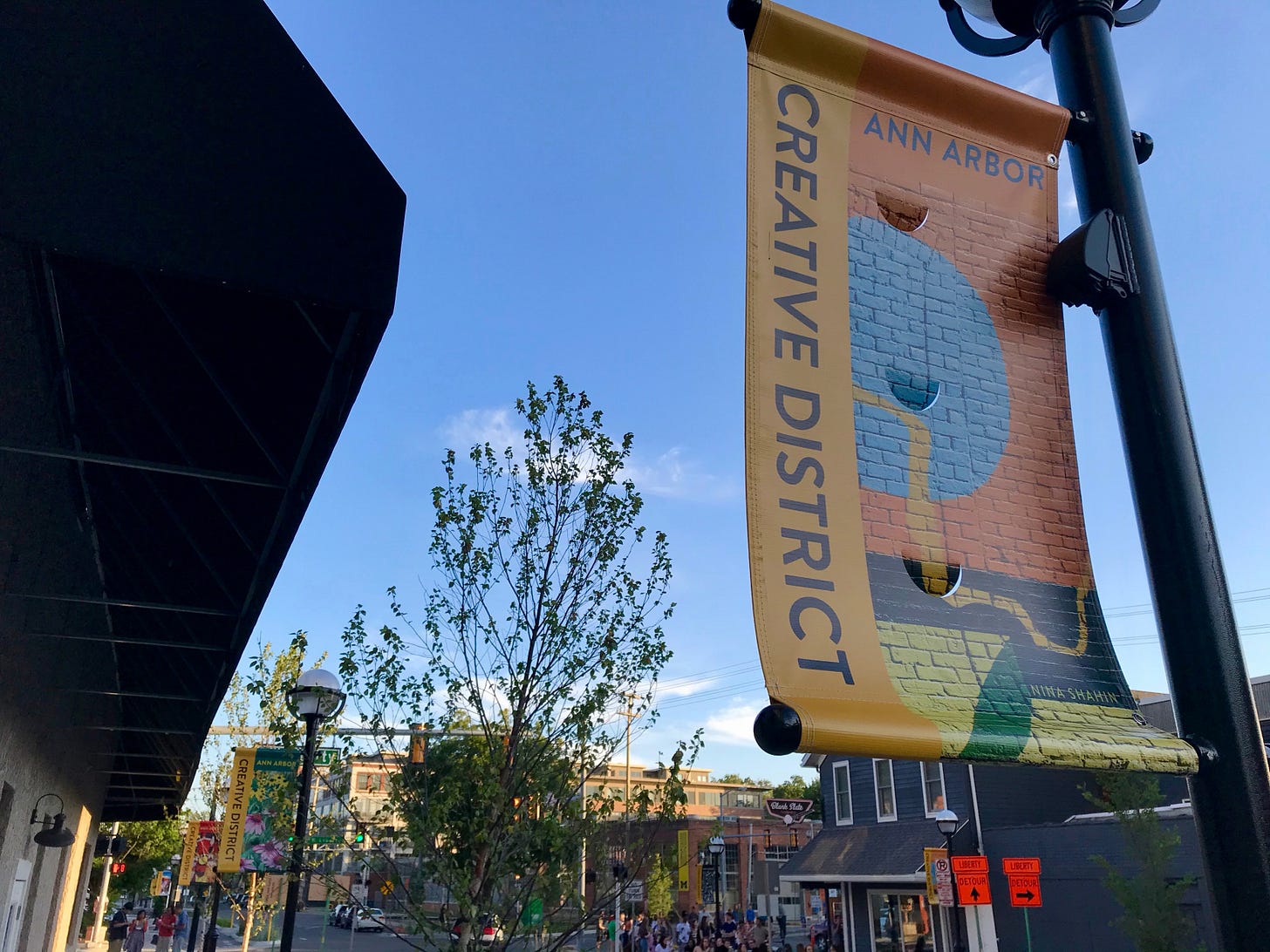In 2002 Richard Florida published The Rise of the Creative Class, and it was, and remains, tremendously influential in local government policy and planning, in arts policy, and “advocacy”. I would say it is the second most influential book in this regard in the past forty years (I will get to the most influential when this series gets to the letter Q). States and cities across the US, and internationally, took to his claim that the successful metropolis of the future would be the one that could attract and retain the highly mobile, well-educated, “creative class”, who had very different talents, preferences and lifestyles from old-school, non-creative muggles.
Where did all this come from?
In my previous post, I wrote about how modern economic growth comes for the most part from technological change: we acquire new knowledge, which sometimes gets embedded into new products and capital goods, that allow us to produce more things of value. For example, our agricultural output per farm worker has increased dramatically over the past century from our being better informed about soil management, new crop varieties, herbicides and pesticides, more advanced farm machinery, and better ways to transport and store produce to reduce food going to waste.
When I was a economics student back in the day, our courses in macroeconomics were mostly focused on business cycles: why did they happen, and what could governments do to dampen their amplitude and avoid recessions, whether through fiscal policy (adjust aggregate taxes and government spending to boost or contain aggregate demand) or monetary policy (have the Fed play with interest rates and money supply to manage aggregate demand), or through just leaving everything to markets and avoiding interventions that might do more harm than good. But this focus on cycles began to change in the 1980s, when macroeconomics returned to what had become something of a neglected topic: aggregate growth. If we could boost long-run growth in real GDP by even a fraction of a percentage point per year, the welfare gains over time would swamp any losses we had from temporary recessions.
The leading figure in this rejuvenation of growth theory was Paul Romer, and his insight was that technology change was even more important than we had previously thought, since there were so many spillover, or externality effects, from new innovations. Some aspects of technology change are privately controlled through patents, but, as with copyright, patents do not grant a monopoly on the spread of basic ideas. You can patent a particular aspect of an electronic vehicle, but not the concept of an electronic vehicle or how it might work. We’ve always known this - it is why the tax system, rightly, subsidizes research and development expenditures by firms: there is a “public good” aspect to what might be discovered. But Romer suggested that we had been terribly underestimating the value of new knowledge. (David Warsh wrote a really fine book about this revolution in thinking).
Well … if new knowledge is where economic growth comes from, then doesn’t it make sense for cities to try to attract those people who spend their days coming up with new knowledge?1
Richard Florida took inspiration from “new growth theory” and put some spin on it.
First, we have known for a long time that “knowledge spillovers” happen between firms, even rival firms, that are located next to each other: it is why industries tend to cluster (why back in the day would New York advertising agencies all want to locate within the same few blocks around Madison Avenue?). Your firm absorbs - perhaps through quite informal channels - what people in neighboring firms are thinking these days, and this can foster new ideas. But Florida asked: what if creative ideas arise in an environment full of “creatives” (yes, I winced as I typed that word) even if they are doing different kinds of things? Suppose a small software start-up is inspired by the avant-garde art gallery down the block, and the interior design firm across the street. Are firms more creative, better at coming up with ideas, in a city that in general just has more of a “vibe” of creativity? Arts advocates jumped on this idea: fund the arts, and all manner of nanotech engineers will be moving in too.
The link between artists and other firms is most clearly set out by Florida in an article published the same year as his book, 2002, in the Journal of Economic Geography, called “Bohemia and Economic Geography” (when teaching Florida I usually had students read this short article rather than his somewhat padded book). He creates a “Bohemian index”, which essentially measures whether you have more artists as a proportion of your workforce than the average metro area, where artists include “authors, designers, musicians and composers, actors and directors, craft artists, painters, sculptors and artist printmakers, photographers, dancers” and a Census category of artists, performers and related workers. Then he looks at correlations between Bohemia and “talent”, which is the proportion of the workforce with at least a bachelor’s degree (yes, that’s an awfully simplistic way to think about talent, but a commonly-used one) and finds:
As well as:
I don’t think any of these correlations are particularly surprising, but at the same time there’s still a lot we don’t know: are artists drawn to places where there is an audience of more formally-educated consumers, so that this analysis gets cause-and-effect backwards? Are tech workers drawn to “Bohemia” as consumers, or as a place where they think their businesses will be more successful at generating patents?
Second, said Florida, the political environment will matter - in his Bohemia paper he simply uses the word tolerance: any city that is going to attract all these creative sorts will need to be tolerant of difference. Is the city welcoming to gay people (and here I remind my younger readers that the early 2000’s were a fraught time in the US when it came to tolerance of gays)? To racial minorities? To women in jobs not traditionally done by women? Around 2005 or so, as Florida’s creative-class ideas were everywhere, I was invited to give a talk on the topic to various community leaders from across the state of Georgia. The talk was in Statesboro, and when I arrived at the elegant structure at which I was to give the talk, I passed by a massive statue honoring Confederate war dead, with a lot of fresh flowers surrounding it. What was I to say about that?
Third, according to Florida the creative class would be looking for particular sorts of amenities in any place they were going to live: cutting edge arts and cuisine, a flexible schedule for work and dress codes, interesting night life. Well … Ed Glaeser wrote a perceptive review of Florida’s book, in which he asked, “are you sure about all this?” Because what if designers and software engineers and the like actually just want boring things: affordable housing, good outdoor spaces, safe streets, good public schools and things for their kids to do? What if they would rather live in Gwinnett County than in Little Five Points, in Naperville rather than Logan Square, or in Plano rather than Downtown Austin?
I live in Bloomington, Indiana. The university, and other employers (mostly in health-care related industries) need to attract an educated workforce. And I think the city does not badly at it. But it does it on old-school stuff: affordable (well, until the past few years anyway), lots of parks and woodlands nearby, bike paths, great public schools. We don’t have “cool” stuff: there is no edgy art here, our cuisine is “Midwest college town”, and there is no nightlife unless you think hanging with undergraduates who’ve had two-too many White Claws is nightlife. But it’s a good place.
So let’s just say that Florida’s hypotheses remain … unproven.
I never fully bought in to what Florida was recommending, thinking it was all a bit fuzzy, but I did think he was asking good questions (I still do): I wrote about it in Poetics at the time (ungated version here), and helped organize a conference that led to an edited volume. I found the question of artists and urban development really interesting, even if it always remained for me at the “interesting question”, rather than “definitive answer” stage. Florida’s claims made me think.
But here is the criticism I had from the start from an arts policy perspective. Funding support for the arts requires making choices: more funds for this means less for that. We economists really are dismal on this topic, but opportunity costs are always with us. Directing your arts funding towards “what do we think groovy creative class people will like and make them want to live here?” means less funding for the folks already here, doing ordinary jobs, who might have different interests in terms of what art they would like to see supported. It elevates one type of resident, or potential resident, over another, on the prospect of which ones will bring more knowledge spillovers in their work. Beyond the fact that we might be really off base in terms of what sort of art inventive-tech-types are interested in, there is a big question of fairness.
So, who are the “creative class” anyway? In his book Florida goes well beyond his “Bohemians”, and gathers all workers who need to be creative in making decisions on a day-to-day basis in their work, including scientists, engineers, managers, and figures that is about one-third of the workforce. But his categories are odd. People in education and health care are “creative” in this sense, but sharply constrained in their jobs (especially K-12 teachers). Even with artists it is not clear cut to me.
I recently joined the Bloomington Chamber Singers and this spring we will perform Joseph Haydn’s Nelson Mass. So, am I doing a “creative class” thing here? Haydn gets full credit for being creative, of course. And our musical director needs creativity in terms of how to interpret the piece and to lead the choir. But me: I’m just following orders - indeed, “creativity” would be rather frowned upon coming from the tenor section.
Is there anything of value in thinking about a “creative class”? What if we approached in terms of a question: what would be a useful way of adding up people who are “creative” in their work? What question might it help us solve?
If we took Florida’s knowledge + creativity spillovers approach, then one useful thing would be to know exactly what sort of workers tend, in their jobs, to spur innovation in people working in other firms. But we don’t know a lot about this. And it would require analysis a lot more fine-grained than “does locating your engineering firm close to a city’s cultural district seem to help?”, since we would still need to know who exactly are the people spurring these creative thoughts (and “cultural districts” themselves raise all sorts of issues, since they might be nothing more creative than the mayor of the city declaring it as such). I hope in April people enjoy our performance of the Nelson Mass, but will it have any impact at all on innovation and entrepreneurship in Bloomington?
Should we measure creative workers per capita (as Florida’s “Bohemian index” does)? By state, metro, city, or neighborhood? Per capita is often used to compare places, but that is odd: if one city has a population of 200,000, with 10,000 artists, and another city has a population of 50,000, with 3,000 artists, and I really liked art, wouldn’t I find the first city more interesting, even though it has fewer artists per capita? (I will return to this at letter V).
In the end… I think the idea of adding up “creatives” has been something of a dead end. “Professional artists” is something I get, a category where I can say “Jane is a professional artist, but Abbie is not”, and feel a bit confident about it, even if I still don’t really know whether Jane’s work has an effect on innovation in other firms. To say “Ethan is in the creative class, but Liam is not” … what do I mean then? If Ethan operates a camera for the local tv station news program does that make him creative, but Liam, who fixes motorbikes, is not creative?
Florida himself is willing to engage with critics of his work - here is a piece from 2012 by him that goes into a fair amount of detail. But I am still left with a lot of questions, in particular about what cities that want to spur economic growth - a very important topic in the Midwest with so many cities that have had decades of stagnation - ought to do. Of course any city wants talented people to come live there. But policies that invest a lot of resources into trying to get people to move from Shelbyville to Springfield won’t do much for the prosperity of the region as a whole. And maybe we should stop equating “talent” with “creativity”. Efficient operation of urban infrastructure, sound city planning, great public schools, and a solid social safety net needs talent, to be sure. But the idea that what’s really needed is a big dose of creativity, say by adding artists to various city government departments … how exactly does this help?
Canadian musical coda:
An alternative might be to try to teach people how to be creative, and universities in recent years have created courses in “creative thinking” and such. I have never bought into it, really: I tried reading Rick Rubin’s The Creative Act, but just couldn’t get very far. Maybe that’s my own lack of imagination.












I'm curious if you've read any of Richard Florida's recent concerns about inequality (I haven't read his book, but found this article interesting -- https://www.lrb.co.uk/the-paper/v40/n08/ben-rogers/the-great-sorting )
"It also transpired, in ways few anticipated, that globalisation was good for the established global cities in particular. It had been assumed that the growth of an ever larger and more integrated transnational economy would threaten the supremacy of these places. Surely emerging cities would provide the same services more cheaply and efficiently, just as they do trainers, mobile phones and call centres? But it turns out that New York and London have unique qualities that it is very difficult for newer or second-rank cities to replicate: urban infrastructure – roads, trains, homes, offices, parks – developed over the centuries; a vast range of businesses offering pretty much any service you could want; endless employment opportunities; and softer attributes, such as norms of lawfulness, a rich architectural history and cultural life. . . . "
Also, another possible musical choice, "Bohemian Like You" by the Dandy Warhols -- https://www.youtube.com/watch?v=CU3mc0yvRNk
Since you've mentioned them in a single context, it occurs to me that Florida and Rubin have the same problem with their claims: What they describe is undoubtedly going on (creative people play a role in cities with growing economies; creative people are attentive, open, and whatnot), but it's not clear that the related observations are actionable (whether you can grow economies by attracting creative people; whether you can become creative by being attentive and open).